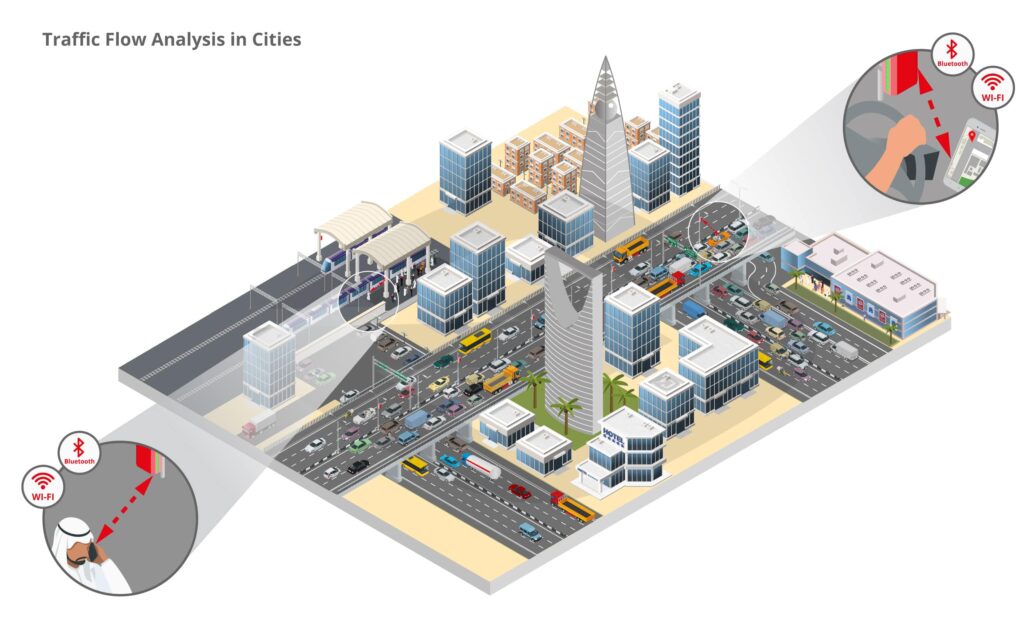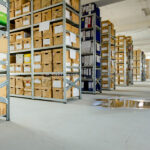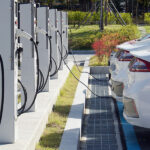In large cities and tourist regions, like the ones in the Middle East, potential for optimization in a variety of fields can be found and exploited by conducting a traffic flow analysis.
AT A GLANCE
- collection, evaluation and analysis of data
- discovery of optimization potential
- data-driven decision-making
PROBLEM DEFINITION
In numerous cities, it is a frequent occurrence that opportunities are missed, suboptimal decisions are made and processes aren’t running smoothly because existing data isn’t analyzed adequately or important data isn’t gathered at all.
SOLUTION
By collecting data in cities and using an analysis software, a lot of benefits can be realized in a variety of areas amongst which are traffic, tourism and retail. A good data base can be created by collecting relevant data along traffic routes such as highways and train stations. Via the smartphones of the road users position data as well as various other information that provide valuable insights, for example into the home country of the smartphone owner, can be collected.
The gathered data can be analyzed in a software and used for a variety of applications. By measuring the traffic volume and the occupancy rates of roads, it is possible to identify dense traffic and give road users information regarding delay times and alternative routes on digital road signs. The tourism industry also benefits from the collected data as the information where people are coming from and which places and sights they are most interested in helps the tourism association to target these groups better. Shopping centers can profit as they can adapt their offerings and advertisements to appeal to the people who are visiting. Furthermore, it is possible for shopping center operators to make data-driven strategical decisions, for example concerning the opening of further branches.
TECHNICAL IMPLEMENTATION
Infsoft Locator Nodes, which are connected to the power grid and the internet, are installed along roads and other traffic routes. The Locator Nodes detect Wi-Fi and Bluetooth signals of smartphones, for example in passing cars. This way, in addition to position data, further relevant information concerning the smartphone owners can be collected.
The data is sent to the infsoft LocAware platform® and evaluated in infsoft Analytics in the form of graphs and diagrams. Historical data can be accessed at any time in order to measure the success of implemented actions and discover further optimization potential. Furthermore, reports can be customized in order to fit the users’ particular requirements.







